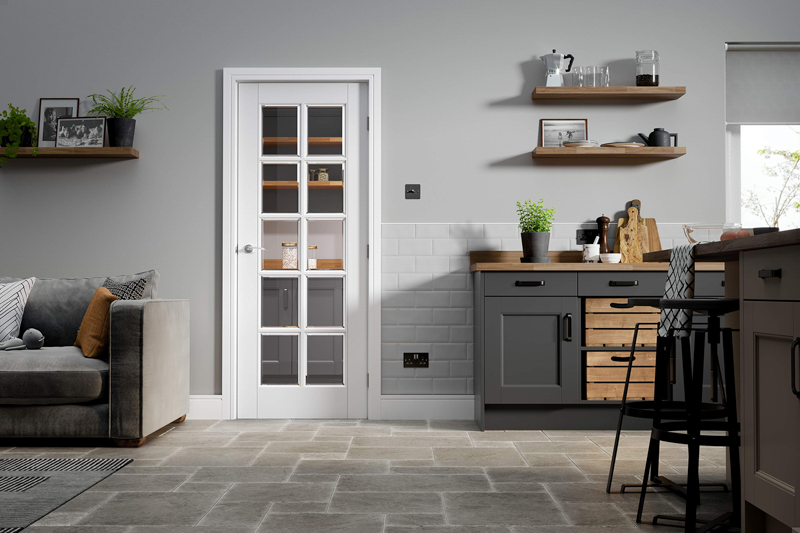Beginner Guide On How to Trim a Door to Size

.
Overview of Trimming a Door
Trimming a door to size might seem like a daunting task, but with the right approach and tools, it can be a rewarding DIY project.
Whether you've just bought a new door that doesn’t quite fit your doorframe or you've removed an existing one for some renovation, we can help.
Tools and Materials Needed
Before you dive in, you'll need a few tools and materials. Having everything ready will make the process smoother and more enjoyable.
 .
.
Essential Tools
- Measuring Tape: For precise measurements, as you definitely don’t want to cut too much!
- Pencil: Marking your cuts is key, and a pencil will allow you to make adjustments easily.
- Straight Edge or Ruler: To draw your cutting line.
- Circular Saw or Handsaw: A good saw is essential for making clean cuts.
- Sandpaper: This helps smooth out rough edges after cutting.
- Safety Gear: Always wear goggles and a mask to protect yourself while working.
Optional Materials
- Wood Filler: This can be handy for covering imperfections after cutting.
- Paint or Stain: If you want to refresh the look of your door after trimming, a new coat can do wonders.
.
Measuring the Door and the Frame
Accurate measurements are the foundation of a successful door trimming.
Step-by-Step Measurement Instructions
- Remove the Door: Carefully take the door off its hinges and lay it flat on a stable surface.
- Measure the Door Height: Use your measuring tape to find the height of the door. Make sure you measure from the bottom to the top.
- Measure the Frame: Check the height of the doorframe where the door will hang. This often helps you determine how much you will need to trim.
- Calculate the Difference: Deduct the door height from the frame height. This will guide you on how much to cut off.
Tips for Accurate Measurement
- Double-check your measurements. It’s always better to measure twice and cut once!
- Consider the floor covering. If you're adding carpet or other flooring, keep that in mind as well.
Preparing for the Cut
Once you have your measurements, it’s time to prepare the door for cutting.
Marking the Cut
- Use a straight edge to draw a line on both sides of the door at the measurement you calculated.
- Make sure that the lines are level. This ensures a clean cut and a professional-looking job.
Setting Up Your Workspace
- Find a flat, sturdy surface to work on, like a sawhorse or a large table.
- Secure the door in place to prevent it from moving while you cut.
Making the Cut
This is where the magic happens!
Using a Circular Saw
- Position the Saw: Align it with the cutting line, ensuring it will cut straight down.
- Start Cutting: Turn on the saw, and let it reach full speed before you start cutting through the wood.
- Follow the Line: Steadily guide the saw along your marked line. Patience here pays off.
Using a Handsaw
- Position the Saw at the Mark: Get the blade lined up with your mark.
- Start Sawing: Use smooth, even strokes. Let the saw do most of the work.
- Finish Cleanly: Once you reach the end of your cut, be careful not to force the cut.
Smoothing the Edges
After cutting, you might notice some rough edges.
Sanding Techniques
- Grab your sandpaper and smooth down the edges of your cut.
- Start with a rough grit and finish with a fine grit for a polished result.

Re-hanging the Door
After trimming and sanding, it's time to put your door back in place.
Steps to Re-hang the Door
- Align the Hinges: Position the door back on the hinges, ensuring everything fits perfectly.
- Secure the Hinges: Use screws to fasten the hinges tightly.
- Check the Fit: Open and close the door to ensure it swings freely without dragging.
Troubleshooting Common Problems
Sometimes, things don’t go as planned. Here are a couple of common issues:
Door Doesn’t Fit
- If the door is still too tight, you might need to trim a bit more. Measure again for accuracy.
Uneven Gaps
- If gaps appear uneven at the top and bottom, you might need to sand the door slightly on one side to adjust.

Conclusion
Trimming a door to size is not only a simple task but also a satisfying one. Seeing your hard work pay off as your door fits perfectly can bring a sense of accomplishment. Remember, the key is to take your time with measurements and cuts. So gather your tools, roll up your sleeves, and give it a try! Happy DIY-ing!



